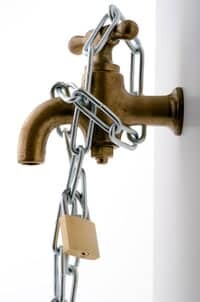 Traditional energy sources at the verge of extinction
Traditional energy sources at the verge of extinction
It is no secret that the traditional energy resources, such as coal, oil or gas, are becoming more and more scarce. This energy is not renewable, and the constant exploitation has led to the exhaustion of the sources.
In addition, fossil fuels are more polluting than alternative energy resources. It is a well-known fact that pollution is one of the most pressing issues our planet is confronted with nowadays. Some scientists in the US even blame the use of fossil fuels for global warming. This theory is supported by scientific discoveries regarding the effect of carbon dioxide into the atmosphere. Carbon dioxide results from the burning of fossil fuels. This gas is responsible for the climatic changes that resulted in higher temperatures and heat waves, but also for long droughts, coastal floods and wildfires. According to scientists, even if burning fossil fuels would be immediately terminated, the effects will still last for another century, resulting into further degradation of earth’s atmosphere.
The Australian people spend a great amount of money on energy each year. According to a study published on EnergyMatters.com, Australians spend around 50 billion dollars on energy only.
These costs include fossil fuels, such as:
- Coal
- Oil
- Gas
In order to cut the costs, but also to provide a solution that is environmentally friendly, Australia is slowly trying to switch to green energies.
Green options for energy resources
Luckily, several environmentally friendly energy resources have been developed over the years. Out of these, the most important ones are:
- Aeolian energy – wind energy
- Solar energy
- Bio energy
- Hydro energy
Other energy resources include wave, tidal, thermal and geothermal sources.
Aeolian energy is produced by wind generators. This is especially suitable for windy areas, such as South Australia, where several wind farms have already been built.
Solar energy is derived from solar panels that get charged with photovoltaic energy produced by the sun.
Bio energy uses biomass and liquid fuels in order to provide power. Biomass refers to organic matter derived from plants because of photosynthesis. It includes forestry and agricultural residues, and various forms of organic waste.
Power stations that use water to provide energy have already been built in the Snowy Mountains, in Australia, providing almost 15% of all renewable energy used throughout the country.
Renewable energy sources will replace fossil fuels in the future
There is no doubt that renewable energy sources are to replace fossil fuels in the future. Partly because fossil fuels have become extremely scarce throughout the world, and partly because of the harmful effects burning coal, oil and natural gas has on the surrounding environment.
Many environmental NGOs fight for the utilization of renewable energy as a replacement for the traditional power sources. Their arguments are, aside from the harmful effects of fossil fuels upon the environment, the fact that green energies are inexhaustible, as compared to fossil fuels, and that the use of renewable energies is more cost effective.
Envirosafe Solutions supports the shift to new forms of energy. Speak to Envirosafe Solutions about their Extreme Green Range of eco-friendly products. 1300889070
Sources:
http://www.usatoday.com/tech/science/2007-01-30-ipcc-report_x.htm
http://www.cleanenergyfuture.gov.au/clean-energy-future/our-plan/clean-energy-australia/
http://www.energymatters.com.au/faqs/renewable-energy-faq.php

























